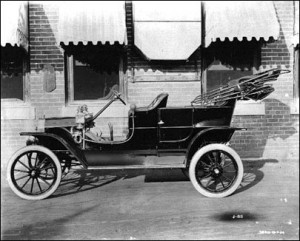Overview
Near the beginning of his memoir Growing Up (1982), journalist Russell Baker describes the United States of his mother’s childhood, in the first decade of the twentieth century, as a “young country,” one that seemed to his grandfather at least, as the “greatest country on God’s green earth.” Whether or not that was true, of course, depended (and still depends) on your perspective. Still, it is amazing how much the maturing nation has changed since 1900. The editors at the Digital History textbook have collected some of the most notable examples of these changes in their sections on “The United States in 1900” and “Twentieth Century Revolutions.” For example, life expectancy has doubled and population has essentially quadrupled since 1900. Incomes have skyrocketed. Poverty rates, though still frustratingly high, have plummeted. Some might argue that’s because government is far bigger and more powerful. In 1900, government spending was less than two percent of GDP; today, it is about 40 percent (note: these numbers vary by source and how terms are defined). Of course, others might retort that today’s poverty rates could be even lower if the government taxed and regulated less. Federal tax revenues were measured in the hundreds of millions of dollars in 1900 (in that era before the income tax), while today, they are measured in trillions. Nobody disputes that technology has shattered the world that was. The editors point out, for example, that in 1900 there were only about eight thousand cars in the U.S. and that each person made an average of 38 telephone calls per year. Obviously, things today are much different. The average teenager texts more than 60 times per day. Yet perhaps the biggest difference of all concerns gender. The editors label the 1900s as “A Century of Women,” pointing out that at the beginning of the century, women could vote in only four states and that only about six percent of married women participated in the workforce. Nobody can dispute that opportunities for American women are much greater than they were in the era of Lucy Elizabeth Robinson’s childhood.
Online Textbook Resources
A New Era from Digital History (Mintz and McNeil)
Jane Addams from Digital History (Mintz and McNeil)
Selected Timelines
America 1900 (PBS)
American Literature & Events: 1900s (Donna Campbell / Washington State)
Featured Videos
The nation’s first “feature” film was “The Great Train Robbery” (1903) from the Edison Motion Picture Co. It’s only about 10 minutes long. You can read more about its background and why it was so innovative at this page at the Internet Archive.
